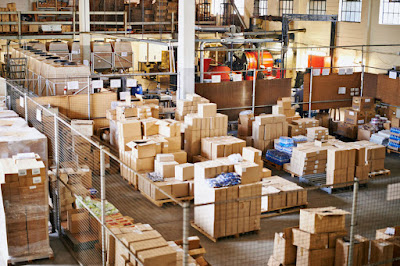Unlocking Growth: Exploring Warehousing Space in India
Introduction:
India's burgeoning economy, fueled by rapid
industrialization and the rise of e-commerce, has led to an increased demand
for efficient and strategic warehousing solutions. As businesses expand their
operations, the quest for well-equipped and strategically located warehousing
space has become paramount. In this dynamic landscape, the availability and
utilization of warehousing space play a pivotal role in ensuring seamless
logistics and supply chain management.
Growing Demand for Warehousing:
The evolution of consumer behavior, coupled with the
proliferation of online retail, has resulted in an unprecedented surge in the
demand for warehousing space across India. E-commerce giants, manufacturers,
and logistics companies are actively seeking state-of-the-art facilities to
accommodate their inventory, facilitate faster order fulfillment, and optimize
distribution networks.
Key Features of Warehousing Space in India:
Strategic Location: Warehousing spaces strategically
located near major transportation hubs, ports, and industrial zones are highly
sought after. Proximity to key markets and efficient connectivity enhances the
speed and cost-effectiveness of supply chain operations.
Modern Infrastructure: The demand for modern,
technologically advanced warehousing facilities is on the rise. Features such
as automated storage systems, real-time tracking, and advanced security
measures contribute to the efficiency and safety of warehousing operations.
Scalability: In a dynamic business environment,
scalability is crucial. Warehousing spaces
that offer flexible and scalable solutions allow businesses to adapt to
changing storage requirements without significant disruptions to their
operations.
Compliance and Regulations: Adherence to local and
international regulations is imperative. Warehousing spaces that comply with
safety standards, environmental regulations, and other statutory requirements
provide a secure and legally compliant environment for storing goods.
Customized Solutions: Warehousing providers offering
customized solutions tailored to the specific needs of businesses contribute to
efficient inventory management. Customization may include
temperature-controlled storage, hazardous materials handling, or specialized
packaging solutions.
Market Trends and Opportunities:
The Indian warehousing sector is witnessing exciting trends,
including the emergence of organized warehousing players, the integration of
technology for inventory management, and the development of multi-tiered
warehousing systems. These trends present opportunities for businesses to
optimize their supply chains and enhance overall operational efficiency.
Challenges and Solutions:
Despite the growing demand, challenges such as land
acquisition, infrastructure development, and regulatory complexities persist in
the warehousing sector. Collaborative efforts between the government and
private sector players are essential to address these challenges and create an
ecosystem conducive to the seamless expansion of warehousing infrastructure.
Conclusion:
The quest for efficient warehousing
space in India is an integral part of the nation's economic growth
story. As businesses strive to meet the evolving demands of consumers, the
strategic utilization of warehousing space becomes a critical success factor.
With the right combination of location, infrastructure, and scalability,
businesses can unlock the potential for accelerated growth and excellence in
their supply chain operations within the dynamic landscape of India's evolving
warehousing sector.




Comments
Post a Comment